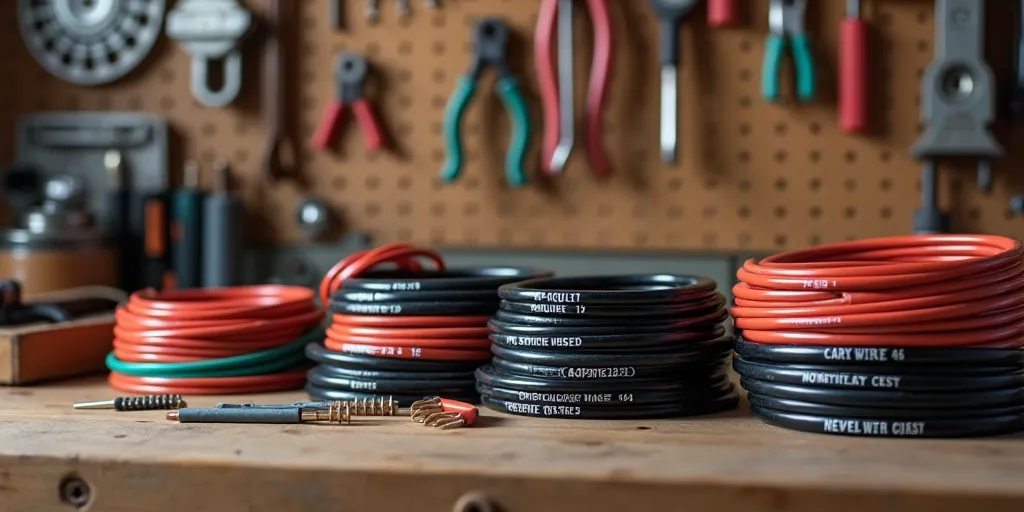-
Shopping Tools
-
Care & Maintenance
-
About
-
Dealer Login

Picking the right wire gauge for golf cart accessories prevents dim lights, audio dropouts, and hot wires, protecting the pack and keeping upgrades reliable and range strong on every ride.
For most accessories—lights, USB ports, small radios—use 14–16 AWG. Bigger loads like sound amplifiers, light bars, or small air pumps often need 12 AWG, and high-draw add-ons may require 10 AWG. Always size wire by amperage, run length, and a margin for future additions.
Wire that’s too small increases resistance and voltage drop, making LEDs flicker and stereos reset. It also runs hot, which can soften insulation and trip fuses. Right-sized conductors keep voltage steady, accessories happy, and your system safe.
Start with the current draw (amps). Add up all devices on the same circuit, then add 25–50% headroom. Example: a 7A radio plus a 2A GPS = 9A; spec for 12–14A capacity.
Voltage drop is based on round-trip length (out and back). Longer runs need thicker wire. When in doubt, go one size larger to keep drop under ~3–5% for 12V systems.
Feed a fused 12V accessory bus from your reducer (or dedicated 12V battery). Place a main fuse near the source, then individual fuses for each branch circuit sized to protect the wire, not the device.
If you plan to add lights or audio later, oversize now. Upsizing one gauge today is cheaper than rewiring the harness tomorrow.
Use a consistent scheme and label both ends. Common choices: red = 12V+, black = ground, blue = amp remote/accessory, yellow = memory/B+, green/brown = lighting. Consistency speeds troubleshooting.
| Accessory (Typical Amps) | ≤ 10 ft (one-way) | 10–20 ft (one-way) | 20–30 ft (one-way) |
|---|---|---|---|
| USB ports, small LEDs (2–5A) | 16 AWG | 14 AWG | 14 AWG |
| Radio, GPS, small light bar (5–8A) | 16–14 AWG | 14 AWG | 12 AWG |
| Medium light bar, small amp (8–15A) | 14 AWG | 12 AWG | 10–12 AWG |
| Heavier amp, air pump (15–25A) | 12 AWG | 10 AWG | 10 AWG (or larger as needed) |
Tip: If the harness will live in hot compartments or bundled looms, treat it like a longer run and upsize a gauge.
Scenario: A 10A light bar with a 14 ft one-way run (28 ft round-trip). Start at 14 AWG for 10A ≤10 ft. Because the run is longer and you want headroom, step up to 12 AWG. If you expect to add more lights, consider 10 AWG and a dedicated fused branch.
Can I mix gauges on one circuit? Avoid it. The thinnest section limits current and can overheat. Keep a circuit one gauge throughout, or upsize the whole run.
Is 16 AWG enough for most lights? For short runs and small LED loads, yes. If the run is long or current approaches 5–8A, move to 14 AWG.
Do I need a relay for a 15A load? It’s smart. Use a relay and 12 AWG (or 10 AWG for longer runs) with an appropriately sized fuse.
Choose 14–16 AWG for small accessories, 12 AWG for medium loads or longer runs, and 10 AWG for higher-draw devices. Size by amps, length, and future plans, then protect every branch with the right fuse. Done right, your accessories run cooler and brighter, and your cart remains dependable—especially when paired with modern, well-equipped golf carts.
